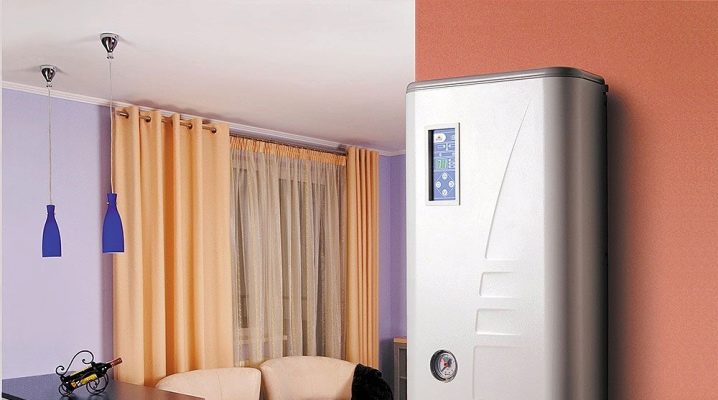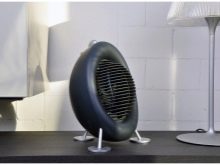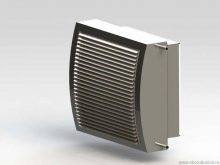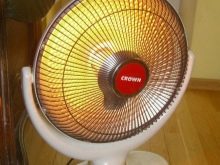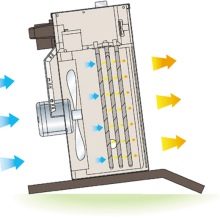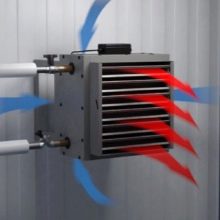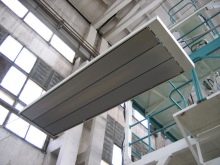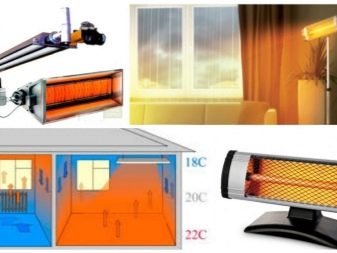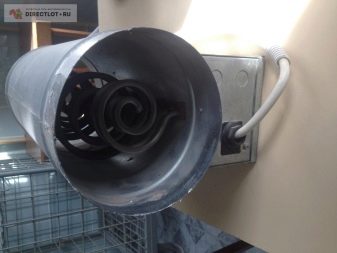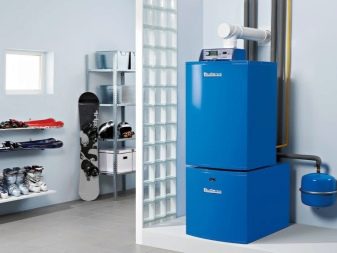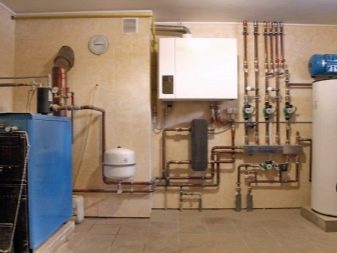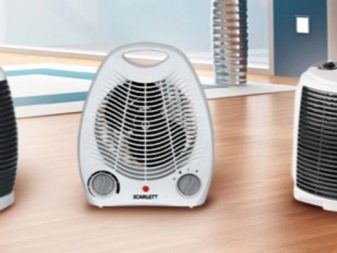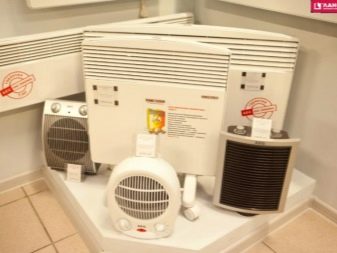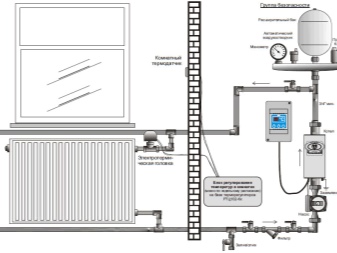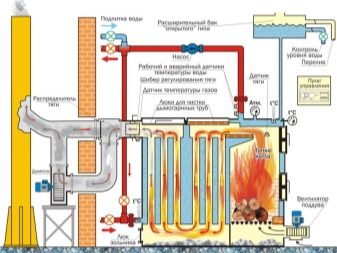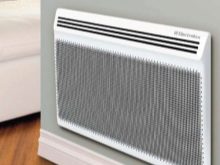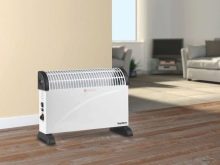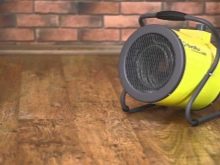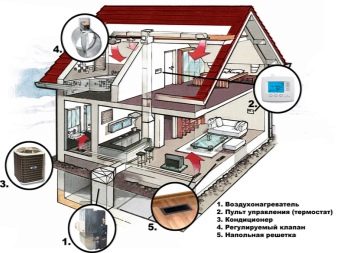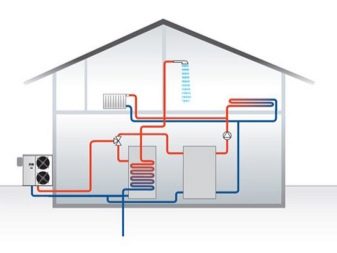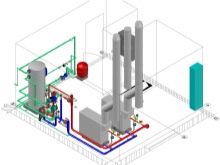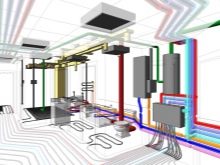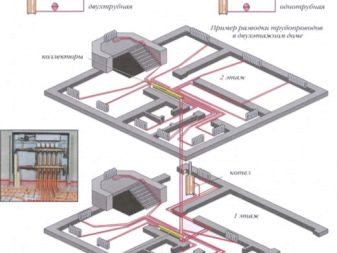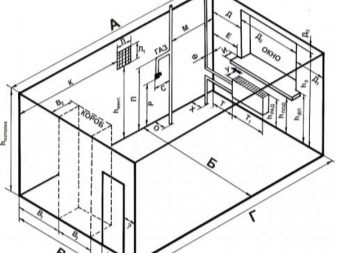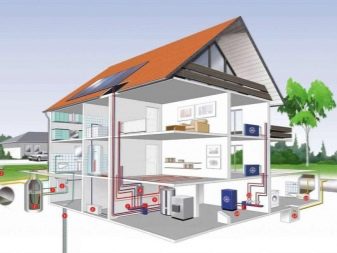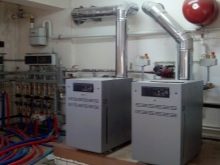How to choose the right heating unit?
Heating units are called all systems that operate on the air-heating principle. Heat is generated by a heat exchanger and a fan. The unit absorbs the cold air and produces a powerful air jet heated to the set temperature.
Special features
Until recently, such units were widely used mainly in the production area. Factory workshops, warehouses, volumetric hangars and workshops are unprofitable to heat with traditional water systems. This is due to the fact that such systems cannot provide heating of a large area of the room, and the warm air coming from them rises strictly upwards. For a large area, this means that even when the air under the ceiling warms up, the bottom of the room still remains cold.
The principle of operation of the air-heating unit is that the system draws in cold air, and at the exit with the hot air heats the necessary parts of the area. In fact, this is a regular fan heater, but with a power several times higher than the power of household appliances.
For the distribution of heated air does not need accumulative radiators. Heat is conducted through pipelines or diverges from the device itself.
The production hall was not important appearance of the equipment, so manufacturers are not puzzled product design. But today, heating units are increasingly being installed in reception offices, waiting rooms, modern stores with huge marketplaces. There is a tendency to use heating units in private country houses. Accordingly, product design is now changing for the better, becoming more aesthetic.
The modern market represents various models of such equipment, differing in technical and operational characteristics. Therefore, if you plan to purchase a unit for production or a country house, you should be aware of all types of air-heating appliances.
Advantages and disadvantages
Systems operating on the principle of air heating have several advantages over their counterparts.
- Rapid heating of the room. The pressure of hot air warms the space much faster than warm waves emanating from a radiator with water.
- Uniform distribution of heat. Air outlet points, as well as built-in adjustable dampers, allow heating of different levels of the room, while heat from convection heaters rises clearly upwards. As a result, under the ceiling, the air can be quite warm, and the floors and the lower part of the space remain cool.
- Efficiency. The operation of air heaters is less expensive than heating with water radiators or air conditioners.
The disadvantages of heating units of a centralized system include several points.
- The complexity of laying air pipes, the need to create and approve the scheme.
- Special safety requirements for the installation of electric and gas boilers.
- External units do not always have an aesthetic appearance, since most often they are designed for use in industrial premises.However, the modern market already offers models with multi-colored plastic cases, which can be chosen for any room design.
With proper design and installation, taking into account all the individual nuances of the living space, the heaters will become an excellent functional heating system at home. According to reviews of Russian and foreign users, the most popular option is an air-heating unit with a water heat exchanger and a central boiler installation.
Types
It is rather difficult to classify air-heating units by one principle. When choosing, it is necessary to take into account differences in the heating element, in structure, in the size of the heated area. For example, depending on the area, a local or multi-channel unit is selected, and the heating system may be local or centralized.
Local
Fan heaters that heat only one room or one dedicated zone are called local. It can be devices of various modifications and degrees of complexity. They have a relatively small construction, mounted on the floor or attached to the walls, to the ceiling.The devices either give out a stream of directional hot air of a certain temperature in a fixed position, or provide a heat curtain, for example, at a doorway or near a panoramic window.
As a rule, such devices serve as an additional element of the central heating system.They are often used in conjunction with water generators or floor heating systems. They are especially convenient as an auxiliary heating in winter when you need to thoroughly warm up a certain area of a bedroom or bathroom.
Multichannel
Multichannel heating units are used for centralized heating, which covers the entire area of the building. The name itself implies a system of assigned pipe vectors through which heated air flows, being distributed over the main areas of the room. All channels (ie the piping system) are connected to the central heating unit. There may be several channel units, their number depends on their capacity and area of the heated room.
The principle of operation of a centralized heating system is as follows: The heat generator heats the air or water, which is distributed through the pipes that surround the entire building. A sensor is installed in each room or exit point, which allows you to adjust the temperature, as well as give signals and set the necessary parameters to the central device.
With a certain device layout and connections, air multichannel systems can also work on air cooling (like air conditioning or a fan), which is important in private homes and food warehouses during the summer months.
Kinds
Depending on the type of heating element used and the method of air heating, the units are divided into electric, steam and water installations. To heat air or steam sent through distribution pipes, energy other than electricity can be used. The operation of water and steam units is often carried out using solid fuel stoves or gas boilers.
Electric
Installation of electrical units in private homes is cost-effective in the local version. The consumed electricity will entail significant expenditure, if distributed over the entire area of the building.For this reason, it is cheaper to equip local air heating at a specific point in the room. The hinged or floor-mounted electric heater will not take up much space, and installation will not require complicated work. Having installed the unit on the floor, wall or ceiling, it is enough to plug it into the power outlet. The only difficulty in organizing such a system is the mandatory wiring of the vent.
Water and steam units
Today they are the most economical and efficient heating systems for private homes. By the principle of operation, they are similar to a radiator heating system. In this variant for water or steam it is not necessary to install additional devices, since the built-in elements distribute the heated air through the pipes and deliver it to the exit points in the room.
Air heating is carried out by supplying hot air from the central boiler of any modification. In the boiler room, an air pipe system is built with diverging channel branches from it to any point of the building. Air enters rooms through holes that can be located in the walls, in the ceiling or in the underfloor space.
How to choose?
The choice of a particular type of heating system is influenced by factors that should be considered at the design stage.
The most profitable heating system is considered to be gas equipment. Unlike water and steam boilers, with gas burning heat loss is minimal. A huge plus is the absence of problems associated with the interaction of materials and liquids. So, gas equipment is not afraid of leakage and corrosion, it is not necessary to drain the water during pauses in use, the pipes do not freeze and freeze in the cold.
Electrical units are good for local heating, otherwise electricity bills can be exorbitant. Water, steam heating, as well as the use of conventional solid fuel stoves (peat, wood) are suitable options for any type of suburban housing.
System design begins with the definition of basic parameters. It is better to entrust the solution of this issue to professionals or to study a special computer program for calculating the optimal ratio of the parameters of the house and the selected heating system.
In any case, the calculations must take into account several mandatory points.
- Quadrature of the whole room (taking into account the height of the ceilings).
- The number of heated rooms indicating the external walls in each room. The more exterior walls, the higher the heat loss. Respectively, the internal rooms closed from all directions, will be warmer than the others.
- The presence of upper and lower "heats" (attic and basement).
- The number, type and size of window systems. From these parameters depend on the leakage of heat from the room.
- Arrangement of the front door. The best option would be the presence of a vestibule, so that cold air does not flow directly into the living room. Otherwise, it is worth thinking about the thermal curtain installed above the doorway.
- Climatic conditions, the maximum drop in temperature in the cold season. The calculation of the required power of heating units will be different for the southern and northern regions.
- The number of walls facing the north. This part of the house is most exposed to the winds in the winter months. The south side of the house is protected from the wind, and in the summer months it warms up better.
Tips
Installation of a system running on electricity or gas fuel should be carried out only by specialists with the appropriate approval.It should be understood that the whole house as a whole is at risk. Installation without compliance with special safety measures and without sufficient experience in conducting such work is fraught with accidents and, at best, failure of the entire system, and at worst, explosion and fire.
Everyone needs to know about some of the nuances of the installation, to be able to control the process of the wizards.
- The units working from an electricity have the increased power. To connect them, a three-phase line is required. This should be taken care of in advance, entrusting the work with such voltage to a qualified electrician.
- Trunking pipes should be made of stainless steel only, since polymers do not withstand high temperatures. Steel pipes around the perimeter should be wrapped with insulating material - the effect of a thermos helps to preserve heat while the air passes through the pipes to the desired point.
- For a hot-water circulating water boiler, polypropylene pipes are selected with appropriate markings that can withstand the maximum water heating temperature.
- Installation of units involving the processing of forced air should be made at a distance of at least 30 cm from the wall. In order for the fan to function properly, air must be able to circulate freely around the appliance.
- Devices that go outside to the fans must be equipped with protective grills. In case of accidental debris, branches or leaves in the fan equipment fails, so the presence of the grating is better to check in advance.
An important condition for preserving heat is warming the walls of the house. The easiest way to take care of this at the design stage of the house, then you can plan the walls in two bricks or use good wood. If this moment is already missed, then it is necessary to seal walls with insulating materials. This will significantly reduce heat loss, and therefore save on daily fuel and energy costs.
Review fan heaters in the video below.
